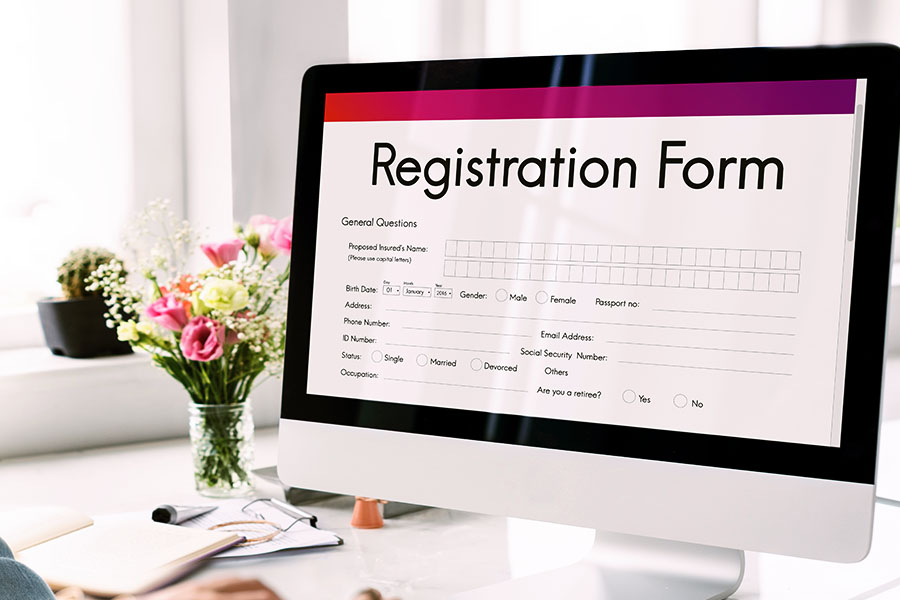The medical billing process of your healthcare facility should aim toward maximizing the revenue of your practice by using the right strategies. One of the most challenging steps is creating a seamless claim submission process in medical billing.
Understanding the claim submission process contributes to better healthcare revenue cycle management. As experienced medical billers, we are here to simplify the process.
Claim Submission Process in Medical Billing
Medical billing in healthcare is a multiplex process that requires vast knowledge and experience. One of the crucial steps is claims submission.
The claim submission process in medical billing comes after the medical coding. In simple terms, claims submission is the process in medical billing when the healthcare provider submits the medical bill to the payer.
With claim submission, reimbursement is requested for the services provided to the patients. Initially, the claims are sent to the patient’s insurance provider, containing details about the medical services provided.
Most importantly, the expenses for every service, medication, or treatment that needs to be covered are listed. So, if you decide it is time for your healthcare facility to use the benefits of outsourcing your medical billing process, our CLICKVISON team is one of your best choices.
Steps of the Medical Claims Submission Process
For a successful outcome of the claim submission, the medical billing staff must go through all the steps carefully. They are the following:
Patient Registration
The claim submission process begins with patient registration. During this step, all information about the patient, such as personal data and insurance details, should be collected. The patient record should always be accurate and up-to-date since patient missing or incorrect patient data is one of the reasons for denied claims.

Source: freepik.com / Photo Contributor: rawpixel.com
Insurance verification and pre-authorization
Some like to include insurance verification as a part of the claims submission process. This step is important because it checks the patient’s insurance coverage and ensures the services will be covered by their insurance plan. Certain medical procedures also need pre-authorization in addition to insurance verification.
Documentation
Next, every service, treatment, and medication that the patient gets during their visit should be adequately documented. This documentation is later on used to turn the diagnosis, medications, and treatments into medical codes.
Coding
The medical coding process is done according to the regulations of the Coding and Classification Systems from the Centers for Medicare & Medicaid Services. The commonly used codes are ICD-10 and HCPCS level I and level II codes. Simply put, medical coding turns the services, diagnosis, and treatment the patient gets into codes.
Claim generation
After the medical coding is done, the process continues with claim generation. The claim generation includes picking the right form and filling it out.
For this step to be done seamlessly, all the data from the previous steps should be collected. The most important components of the claim are patient information, insurance details, diagnosis and procedure codes, and total expenses that the insurance provider should cover.
Claim scrubbing
This process is vital because it involves a detailed filled-out claim check and error detection. To minimize the chances of denials because of errors, our medical billing experts do claim scrubbing.
Claim submission to the payer
Once the claim is filled and checked, it is submitted to the payer. Generally, the first claim is submitted to an insurance company, a self-funded employer, or a government program.
Adjudication
The next step is called adjudication, which is done by the payor. When a payor receives a claim, they start their reviewing process. With the adjudication, the payor determines the amount they will cover. Also, they have the right to deny the claim or request additional documentation.
Billing the patient (if needed)
Ultimately, if the payor does not cover the entire amount for the services, a bill for the patient is generated and sent. This typically happens when a patient has a copayment or a deductible.
Key Components of the Claim Submission Process
Health insurance claim forms are divided into two parts: the header and the detail. The claim submission forms are one page, followed by detailed instructions on how to fill them.
The header of the claim form
The header of the claim form includes information about the patient and the insured. Some of the required patient data includes name, address, birth date, relationship to the insured, and mobile phone. More information is required for the insured, including their personal details and contact data, the name of their insurance plan or program, and their ID number.
Also, this section of the claim form requires the provider to fill out whether the insured has a secondary health plan. If they have, details about the other health benefit plan will be required. At the end of this section, there should be a signature from the insured or an authorized person.
Detail of the claim form
The detail is the second section of the claim form and consists of physician or supplier information. The first few parts are details about the illness, such as the hospitalization dates, dates of illness, the period the patient is unable to work, and the nature of the illness.
If a prior authorization was done, the authorization number should be filled out. Next come the CPT/HCPCS codes and modifiers for the procedures, services, or supplies.
The amount that is charred should also be calculated, including the charges for every separate procedure or service and the total charge. Lastly, the federal tax ID number, patient account number, and signature of the healthcare provider should be added.

Source: freepik.com / Photo Contributor: user4894991
Supporting documentation
In addition to the correct claim form, every healthcare provider must provide the insurance company with supporting documentation. The exact list of supporting documentation that is needed depends on the patient’s case. In general, every medical record, test result or every other document that the healthcare facility has to support the changes in the claim should also be submitted.
Types of Claims Submitted
In the claim submission process, you should carefully pick the type of claim you should submit. In the US, there are two commonly used claim forms: CMS-1500 and UB-04.
Depending on the kind of healthcare institution you are in, you need to file a different claim. The CMS 1500 claim form should be used by individual healthcare providers. That includes non-institutional healthcare facilities, such as physicians, dietitians, and therapists.
On the other hand, the UB-04 form is created for institutional healthcare providers. The UB-04 claim form should be used by nursing homes, hospitals, clinic settings, and rehabilitation centers.
Besides the different form types, the claim submission differs according to the way it is done. Considering this factor, there are electronic and manual claim submissions.
Electronic claim submission
According to governmental standards and regulations, the claim submission process in medical billing should be done electronically. You only need a computer, adequate software, and a reliable internet connection to utilize electronic claim submission.
Claims that are submitted electronically tend to be processed more quickly. For your healthcare facility, that means the chances of experiencing setbacks in your cash flow are minimized.
Furthermore, the electronic claim submission allows claim status tracking at any time and increases the accuracy of the claims. Electronic data interchange also contributes to standardization, making the entire medical billing process more organized, compliant, and efficient.
A special type of electronic claim submission is the direct data entry into the WCMBP system. This type of submission is available for professional, institutional, and delta bills. The DDE method for claim submission offers many advantages, such as quick corrections, no potential risk of lost mail, and easy bill completion and uploading.
Paper claim submission
The process of submitting a paper claim involves printing out and sending physical forms of the claim via mail. The claim form must be supported by physical documentation the insurance company needs to process the request.
With the digitalization of the medical billing process, paper claim submissions are rarely used. In fact, the Administrative Simplification Compliance Act Self Assessment has specifically determined the situations when paper claim submission is allowed. Clams can be submitted in paper form when:
- The claim is sent by a small provider with less than 25 full-time employees.
- Roster billing of inoculations.
- Claims for services provided under a Medicare demonstration project if it is specifically specified to do so.
- Dental claims.
- The provider of the service submits less than 10 claims in one month.
- There has been a communication and internet connection disruption for more than two business days.
- Claims for services that non-US providers outside of the US provide.
Common Errors in Claim Submission
There is no doubt that the entire medical billing process is complex. The process requires attention to detail and expertise. However, the reality is that medical coders and billers can make errors that might slow down the reimbursement process or even lead to denied claims.
Claim submission errors can significantly influence your healthcare organization’s cash flow. Consequently, you should put your entire effort into minimizing the errors in the claim submission process.
Since there are many errors that might happen during claim submission, here are the most common ones and some tips on how to minimize the risk of making them:
Using outdated insurance claim forms
Claim forms are being constantly updated. Typically, there is an announcement on the Centers for Medicare & Medicaid Services website and the insurance provider’s websites when the claim forms have been updated.
As a healthcare provider, it is your obligation to use the latest claim forms in your medical billing process. If you fail to do so, regardless of the reason, it is highly likely that your claim will result in denial or payment delays.
Incorrect or missing data
Medical claims are official and sensitive documents. They must be filled accurately, without any mistakes.
If your medical coding or billing team makes a mistake while filling out the claim, from something as little as a typo to missing or incorrect codes or data, you will get a denied claim. Some of the most common errors in the claims submission process in medical billing are:
- Incorrect demographic information about the patient
- Wrong provider or insurance company data
- Missing supporting documentation

Source: freepik.com / Photo Contributor: rawpixel.com
Not respecting deadlines
Every insurance provider might have different deadlines for the timely submission of claims. In our experience, most insurers have a deadline of 90 days after receiving the healthcare, but that can range up to one year. As a healthcare provider, you should submit your claim submission promptly to avoid missing a deadline.
Conclusion
The claim submission process in medical billing is vital for every healthcare facility. Understanding how it is done and getting familiar with the common errors that lead to denied claims contribute to excellent revenue cycle management and steady cash flow.
If you are considering leaving your claim submission process to experienced medical billing professionals, our CLICKVISION team is happy to handle every step promptly and accurately. Contact us today!

With a strong background in the marketing industry and healthcare leadership roles, Filip is responsible for CLICKVISIONBPO’s sales strategies and onboarding new clients. With a passion for sharing insights gained from his experience, he also shares valuable knowledge through industry related articles.
